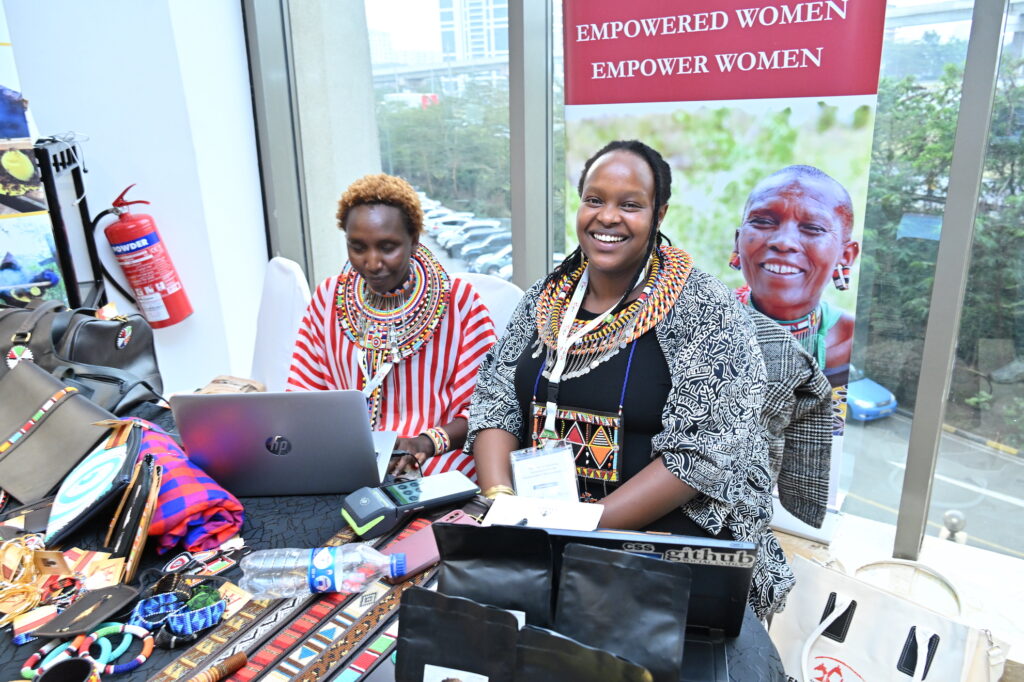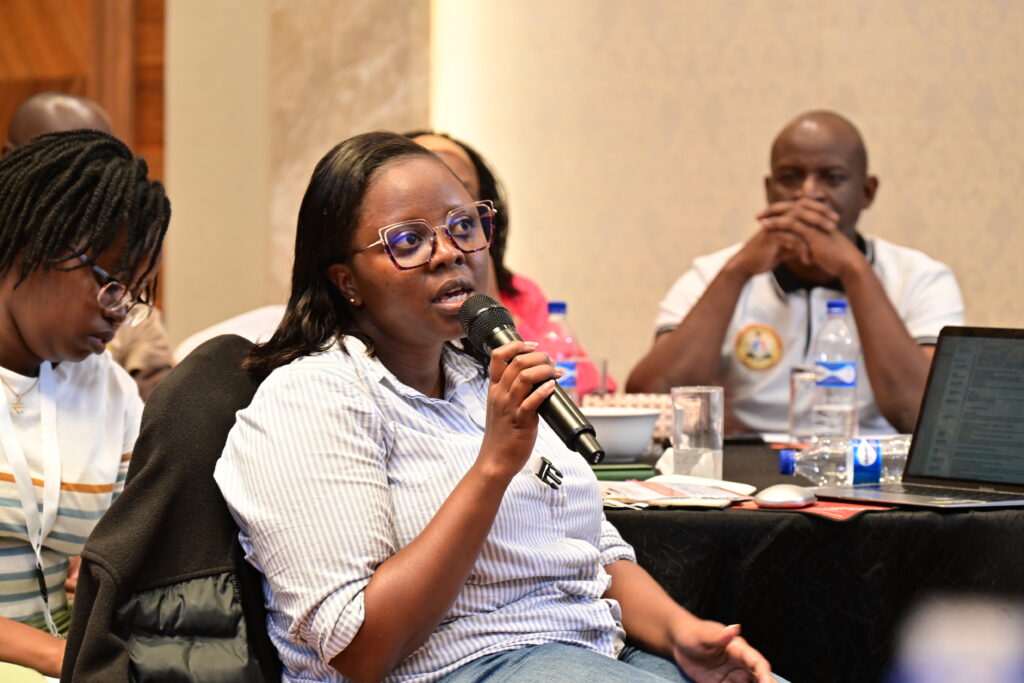Overview
“It was one of the biggest achievements to see people owning up and saying women are equally as good as men in leadership and natural resource management,” said Maurine Nduati, Partnership, Engagement and Gender officer at the Taita Taveta Wildlife Conservancies Association.
She was speaking at the 2nd Kenya Conservancies Investment Forum (KCIF) in Nairobi in August 2025, noting that in Kasigau Conservancy in Taita Taveta, four women were recently elected to the board that had no female leaders since the 1970s.
Her example reflected a broader shift echoed throughout the forum, where conservancy leaders, investors, government officials and community voices gathered to spotlight the people shaping Kenya’s conservation future, with women more prominent than ever before.
A Male-Dominated Past
Kenya’s conservation economy is often measured by wildlife populations, tourism figures or its contribution to GDP. But as many speakers at the event emphasized, the real measure of sustainability is whether communities — particularly women — are empowered. For decades, conservation in Kenya was dominated by men. Inheritance systems, entrenched patriarchal traditions, and exclusion from leadership roles kept women on the margins, even as they shouldered the greatest burdens of climate change and resource scarcity.
“That picture is beginning to change,” said Vincent Oluoch of the Kenya Wildlife Conservancies Association (KWCA). “We are working with conservancies to ensure that women and youth benefit from conservation by supporting them to establish and manage enterprises and secure operational funding.”
At the forum, hosted by KWCA with support from WWF’s African Nature-Based Tourism Platform (ANBTP), women shared stories of how community-led conservation grows stronger when they are central to governance, enterprise and decision-making. That strength is increasingly visible on the ground, where women across Kenya are gaining income and agency through conservation-linked enterprises.
Empowering Women Through Enterprise
In the Athi Kapiti Wildlife Conservancies Association (AKWCA) landscape, women manage beekeeping and beadwork programs. “As much as conservation is done, women also need to be empowered, equipped and mentored so that decision-making can be equal for both genders,” said Merab Eliezer, AKWCA’s programs officer.
The Maa Trust in the Maasai Mara connects beadwork directly to wildlife. “Our slogan at the Maa Trust is ‘work because of the wildlife.’ This helps us connect women in the community with the reason they can do their beadwork projects. They understand the benefits they are getting are coming from the wildlife around them,” said Sylvia Looseyia of the Maa Trust. Beadwork income is also linked to gas cooker distribution, reducing reliance on firewood and making households less vulnerable to deforestation.

Sylvia Looseyia at the Maa Trust’s beadwork exhibition at KCIF.
In Mandera County, the Kontomas Community Conservancy exports honey to Somalia, where prices are higher. In Shurr, a “smart farm” grows watermelons, onions and pumpkins in the desert, while poultry farming and kitchen gardens provide women with financial independence. The Pipai women’s group in Sinobo attracted an investor to help finance, brand and market their honey.
“One of the things clearly communicated by women in the community is, ‘If we don’t have money, don’t expect us to conserve, because we need sustainable livelihoods for this to be important to us,’” said Nduati. “Creating space for enterprise development and linking these enterprises to conservation makes this connection for women.”
Breaking Barriers in Leadership
Empowerment is not only about income. It is also about who gets a seat at the table. At Kiborit Community Conservancy, a women’s council leads discussions and champions conservation issues. “The community realized women can do better in conservation,” said Francis Talam, vice chair of Kiborit.
In Athi Kapiti landscape, women now serve as treasurer and secretary, holding critical governance roles. “Let’s also be decision-makers, not just participants in low-level activities,” said Eliezer.
These breakthroughs reflect years of advocacy, much of it led by KWCA. One effective tool is the Social Analysis and Action approach, which encourages men and women to reflect on norms, stereotypes, biases, and their behaviour that hinder women’s involvement in conservancy decision making. In Kasigau onservancy where the tool was piloted, women were elected as directors, and their constitution and by-laws were amended to require gender balance in future elections.
At the policy level, KWCA successfully pushed for the Community Land Act of 2016, which requires at least one-third representation for women in community land management committees. Together, these reforms are opening doors once closed to women, though barriers remain.
“It is still hard for women to claim authority over conservation decisions as land ownership is largely male dominated,” said Joyce Mbataru, communications manager at KWCA.
“In Maasai culture, men are the decision-makers, and even when we work with women, we still have to approach the men first,” added Looseyia.
Climate change compounds these inequalities. Women, often responsible for gathering water, firewood and food, face greater risks of gender-based violence and wildlife attacks during long treks. “Women must go far to get water and firewood, exposing them to risks of gender-based violence and even attacks by wildlife,” said Nduati.

Maurine Nduati of the Taita Taveta Wildlife Conservancies Association speaking at KCIF.
Other challenges include poor transport, long distances to meetings and schedules that clash with domestic responsibilities. Looseyia described “performative inclusion,” where women participate only because of their ties to male leaders rather than their own standing.
Limited financial support constrains women-led enterprises. Cultural pressures can discourage women from speaking out, while early marriage and lack of education block younger girls from conservation roles. Professional women often face a difficult choice between family and career, especially in remote conservation landscapes. “If the environment doesn’t allow you to do both, you are forced to choose,” Looseyia said. “For many, that choice is family.”
Scaling Change
Despite the hurdles, momentum is growing. At KCIF, KWCA outlined plans to expand gender-transformative approaches like the Social Analysis and Action tool across more conservancies, integrating this with women’s economic empowerment programs. “Women need capacity building to gain agency to negotiate, identify opportunities and lead,” said Oluoch.
Investors and donors were urged to see these efforts not as side projects, but as central to conservation’s future. “We need to unlock opportunities for women to own, manage and benefit from major enterprises,” said WWF’s Nikhil Advani, who leads the ANBTP.
Spotlight on Women-Led Conservancies
In Kajiado County, women at the Kikesen River Conservancy are restoring an 11,000-hectare wildlife corridor that links Amboseli National Park and Lake Magadi. They run the Eselenkei Grass Seed Bank and are planning a solar-powered luxury tented camp — ventures that aim to restore grasslands, offset carbon and deliver more than four times the value of every dollar invested in combined social and environmental benefits.
Elsewhere, inclusive models are taking root. In Marsabit County, Shurr Conservancy is diversifying into eco-lodges, desert farming and clean energy, with more than 50 jobs earmarked for women and youth by 2026. In Baringo, Sinibo Geo Park blends conservation, education and geotourism, with women artisans producing crafts and cultural experiences that generate income while showcasing heritage.
As Kenya looks toward its goal of expanding mature conservancies to 50 by 2030, investors are challenged not simply to fund projects but to ask hard questions: Are women involved in making decisions? Are revenue streams reaching women and youth equitably? And are governance structures inclusive enough to withstand future shocks and build stronger, more resilient communities across East Africa?
Written by Dianne Tipping-Woods
Zimbabwean-born journalist Dianne Tipping-Woods has spent most of her freelance career looking for stories in southern Africa where travel, conservation and development intersect. She is now based in a nature reserve close to the Kruger National Park in South Africa.
Photo credits: KWCA
October 2025